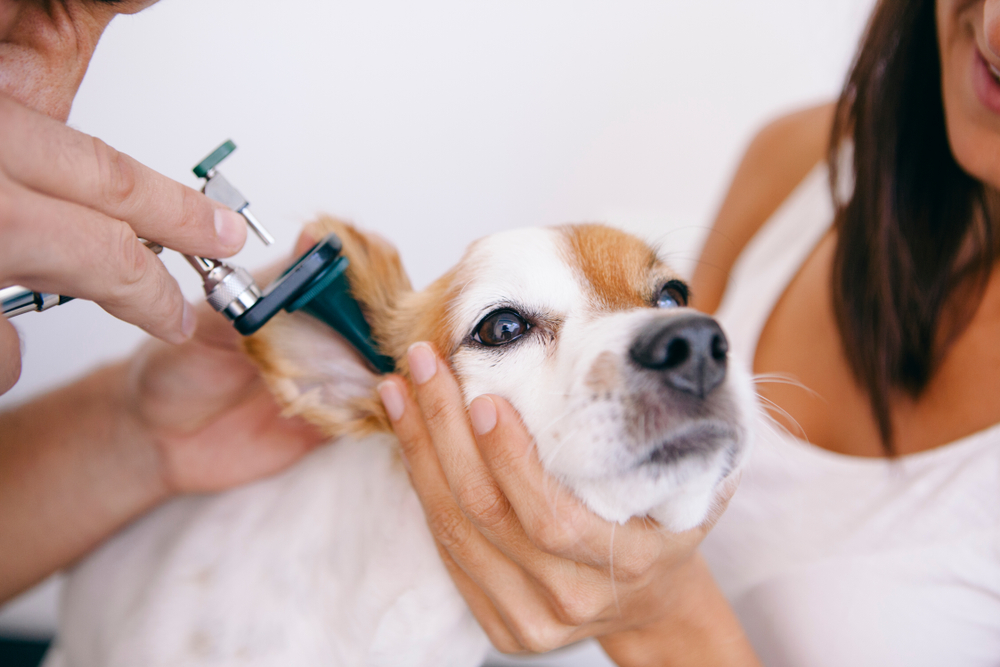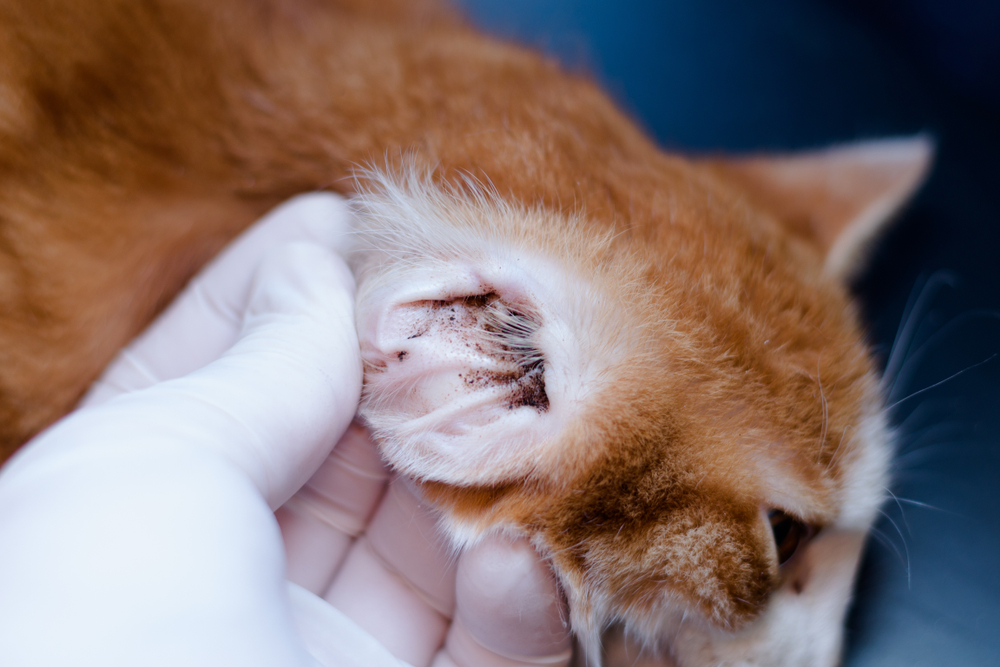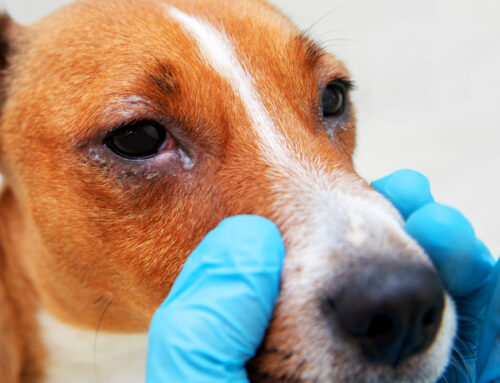Occasionally, an astute pet owner will ask us if their pet’s ear problems could contribute to their eye issues. Most of the time the answer is “No,” except for a specific dry eye condition called neurogenic keratoconjunctivitis sicca (neurogenic KCS). KCS results when the nerves responsible for stimulating tear production are damaged, which can be secondary to a middle ear problem. The Veterinary Vision Center team wants to help pet owners understand how their pet’s ear problems could lead to eye issues, and to learn what to watch for at home.
What is otitis media in pets?
A typical pet ear infection affects only the outer ear canal (i.e., otitis externa). These infections result in the typical signs many dog owners quickly recognize—dark discharge, a foul odor, itching, hear-shaking, and pain. Most otitis externa cases are resolved with standard topical medications, but infections sometimes find their way into the middle ear beyond the tympanic membrane (i.e., eardrum). A middle ear infection (i.e., otitis media) can also result if bacteria travel up through the eustachian tube, which connects the throat to the ear.
Otitis media may occur with or without concurrent otitis externa. Otitis media signs are similar to otitis externa alone—itching, pain, head-shaking, and possible discharge—but may also include hearing loss and neurologic signs, including facial nerve paralysis, Horner’s syndrome, and dry eye.
What is neurogenic keratoconjunctivitis sicca in pets?
Keratoconjunctivitis sicca is the medical term for dry eye, a condition caused by reduced tear production. The tear film helps to lubricate, protect, and nourish the pet’s eye surface, and the cornea can be damaged and scarred without that protection. Most KCS cases are caused by autoimmune inflammation in the tear glands, but neurogenic KCS results when the nerve supply to the tear glands is interrupted.
Neurogenic KCS usually occurs in only one eye, in contrast to regular KCS, which almost always affects both eyes. Signs include a dull eye appearance, copious thick discharge, squinting, rubbing, corneal ulcers, and corneal pigment or scarring. Neurogenic KCS usually appears quickly, sometimes seemingly overnight.
How can otitis media lead to neurogenic KCS?
Any condition that damages or irritates the nerves that supply the tear glands can lead to neurogenic KCS. Sometimes a cause is never discovered, and sometimes a tumor, systemic disease, or ear infection is to blame. Otitis media causes inflammation deep inside the middle ear, which irritates the nearby nerves. The nerve supply to other parts of the face can also be impacted, and the skin on the affected side will appear droopy or dried-out, and the nostril will be crusted.
How is neurogenic KCS treated in pets?
Traditional KCS is treated with topical drops or ointments that decrease inflammation and modulate the local immune system, to stimulate improved tear production. However, this treatment is ineffective against neurogenic KCS, because the glands cannot produce more tears until the nerve supply is restored, but most pets still can benefit from these topical medications, which help to improve the eye’s surface health.
Treating the underlying otitis media will likely resolve the problem, but this isn’t always an easy task. Our veterinarian may order imaging tests, such as X-rays, CT, or MRI, to first confirm the diagnosis. They may sedate your pet to perform a middle ear flush and to puncture the eardrum to release fluid and pressure, and provide antibiotic and anti-inflammatory medications. Until your pet feels better, our team will likely prescribe an oral or topical medication that helps to improve nerve transmission and subsequently tear production. We will also provide your pet with topical lubricants to protect the eye from damage. Neurogenic KCS usually resolves after a few months with proper treatment, but pets may continue to require medications.
A special note about long-lasting, in-office pet ear treatments

While treating your pet’s ear infection usually helps to resolve neurogenic dry eye from otitis media, some newer ear treatments can actually worsen the problem. These products are designed for external ear canal use only, and are intended to work continuously for several weeks to eliminate the need for daily drops. Some pets will react poorly to these medications, possibly because their eardrum ruptured during or shortly after administration, and neurogenic KCS can quickly develop. If you suspect this situation in your pet, immediately contact your veterinarian, who will contact the product manufacturer, who may refer you to our office for treatment.
Neurogenic KCS can lead to multiple complications in pets if not addressed promptly. Corneal ulcers and chronic scarring can cause vision loss—or worse, eye loss—subsequent to reduced tear production.
Our Veterinary Vision Center team members are the experts in dry eye treatments, and we will work closely with your primary veterinarian to find the best solution for your pet. Contact us to schedule a visit, or for more information about our ophthalmology services.







Leave A Comment